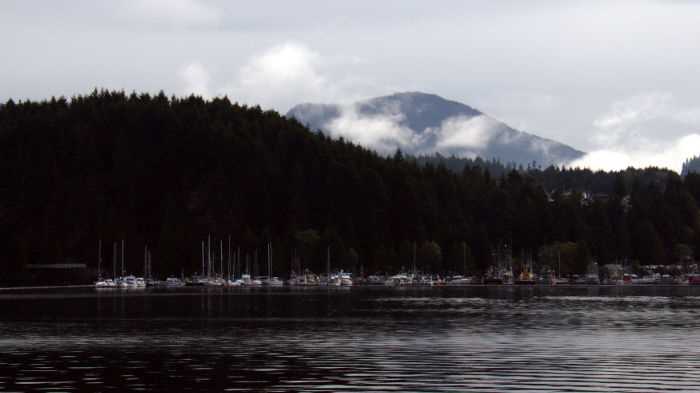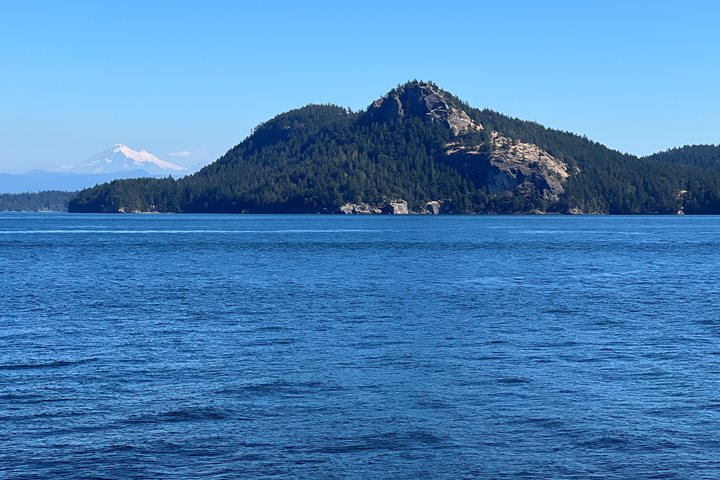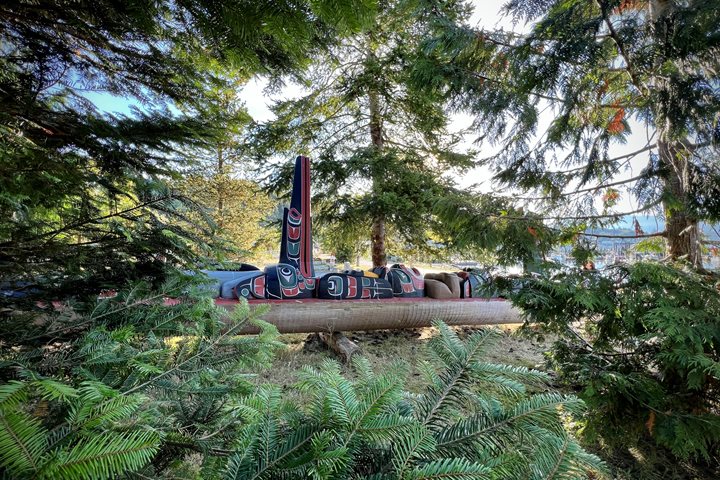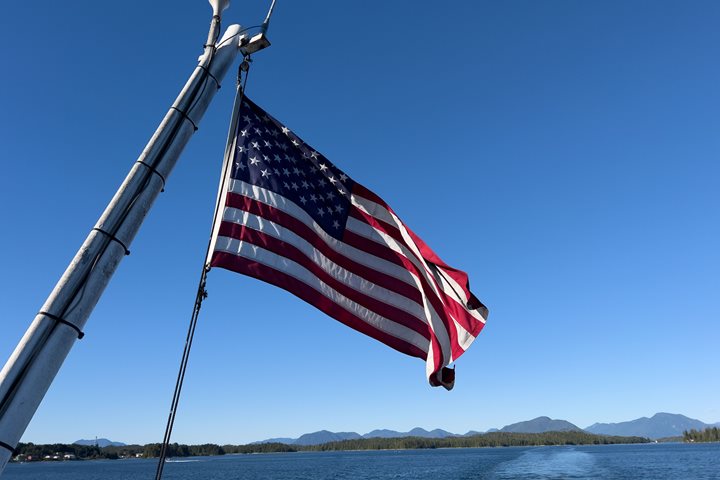We woke at 6 a.m. aboard National Geographic Sea Bird as we reached our Canadian checkpoint in Prince Rupert on the western coast of British Columbia. Canadian customs agents boarded the ship and then cleared us to set off in our expedition landing crafts to explore the town. We spent the morning and early afternoon walking about this sleepy port village, visiting the Museum of Northern British Columbia and perusing the shops, business-front murals, and cafés. Prince Rupert has a population of more than 12,000 people and is one of the deepest water ports on the western Canadian coast. The city is served by a road system, the Alaska Marine Highway, and a rail system that serves mainland Canada, delivering goods that arrive from overseas by container ship. After we departed, we cruised along the Canadian Inside Passage, watching for wildlife as cumulus clouds built up and drifted overhead, and we passed what at first glance appeared to be a barge adrift in the sound. We realized that in fact what we were seeing was a light station situated on an island in the shape of a small ship. Onto Hecate Strait and Haida Gwaii.
- Daily Expedition Reports
- 08 Sep 2019
Prince Rupert & British Columbia, 9/8/2019, National Geographic Sea Bird
- Aboard the National Geographic Sea Bird
- Alaska
Lynn Wilbur, Naturalist/Expedition Diver
Lynn is a marine biologist and underwater photographer whose passion lies in the intertidal zone. Lynn’s love of the ocean began when she was just four years old after experiencing a tide pool for the first time, and she received her first scuba cert...
Read MoreShare Report
A Remarkable Journey to Alaska, British Columbia & Haida Gwaii
VIEW ITINERARYRelated Reports
9/18/2022
Read
National Geographic Sea Bird
Alert Bay, British Columbia
Calm waters and sunny tides welcomed National Geographic Sea Bird to Alert Bay. Eager to stretch our legs, we walked through the sleepy port town to the U’Mista Cultural Center for our interpretive tour of the impressive museum. Alert Bay is part of the traditional homelands of the Kwakwaka’wakw, which were once divided into seventeen different tribes throughout the region. During 1885-1951, potlatch was banned in Canada. Despite the outlaw, one was held in 1921, which resulted in a police raid and the aftermath of many participants facing fines or jail time. Additionally, over 600 regalia pieces were confiscated and distributed around the world. After the ban was lifted, the Kwakwaka’wakw people fought to bring their sacred items home, resulting in the U’Mista Cultural Center. Visiting the impressive collection and learning about this complex history was truly an eye-opening and unique privilege.
9/17/2022
Read
National Geographic Sea Bird
At Sea
Today was a glorious day aboard National Geographic Sea Bird . We are in the process of completing a 350-nautical-mile transit, and our day was spent on the ship. Last night, we left the town of Daajing Giids, formally known as Queen Charlotte City, on Graham Island in Hadai Gwaii. This concluded three days of insightful visits to the island, where we were guided by our cultural interpreter, Barbra Wilson. Our next destination is Alert Bay, British Columbia on Cormorant Island, just off the north coast of Vancouver Island. Throughout the day, our expedition staff members presented on a variety of topics to engage our guests. In the morning, we had a show-and-tell-type workshop, where members of our photo team showed the photographic equipment they use on these types of assignments. Photo instructor Brooke Juhala showed us a sneak peek of a film she is producing called “Inseparable,” which relates to the native culture of British Columbia and will be released later this fall. We also had a photo critique led by Shayne Sanders. Interested guests submitted photos, and the photo team critiqued them. So far, our transit has been very pleasant with excellent weather and calm seas. We are following the Inside Passage, and therefore, we are sheltered from the mighty Pacific by a string of barrier islands. A large storm with hurricane force winds is currently in the Bering Sea, and it seems as if we will experience the tail end of that system as we cross Charlotte Sound later tonight and into tomorrow morning. It is always a pleasure to travel aboard National Geographic Sea Bird , and we look forward to another exciting day of learning and exploration in Alert Bay tomorrow.







